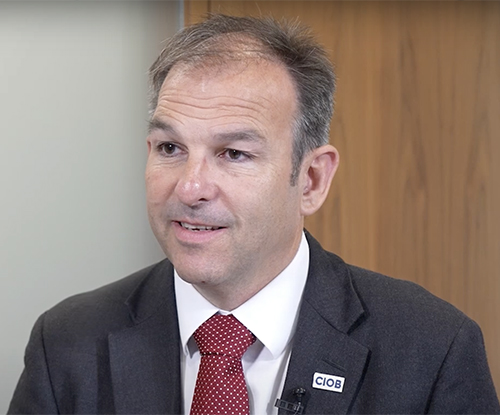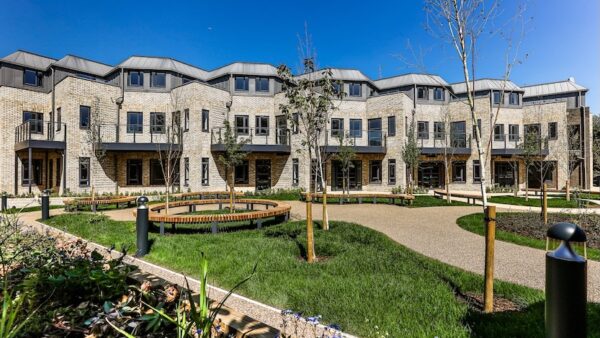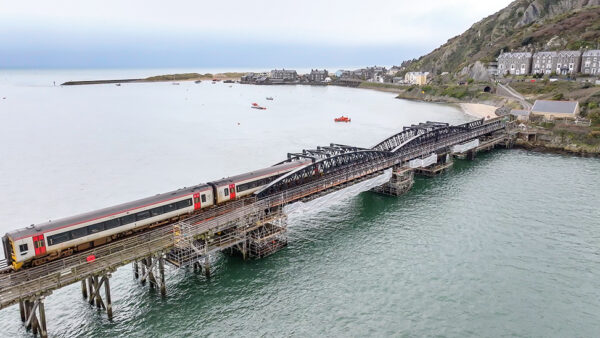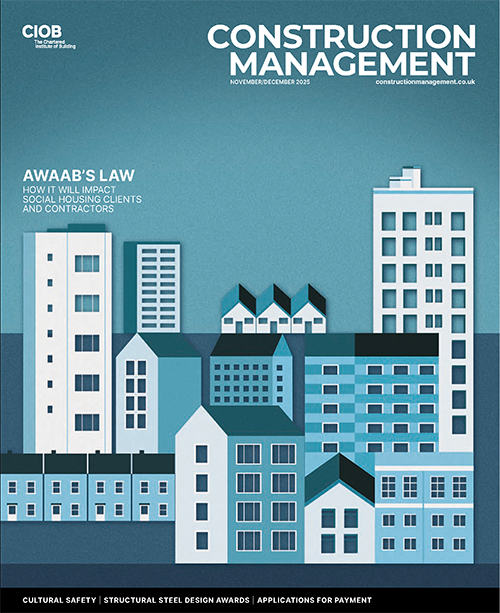
In the second of our client interview series, Cardiff Met’s Graham Lewis tells Will Mann how data analysis is helping tackle the university’s twin challenges of cutting carbon and operational costs.
Like much of the higher education (HE) sector, Cardiff Metropolitan University is facing strong financial headwinds. For Graham Lewis, chief officer for university environments and property, this has meant a reduction in capital budgets, plus pressure to find operational efficiencies and carbon savings.
But it’s not all gloom. “We’ve received an additional £2.6m from a decarbonisation grant and a one-off capital grant allocation from Welsh government that must deliver carbon and operational cost savings,” he explains. “The only catch: the associated works have to be designed, procured and delivered in less than five months from grant award.”
Lewis is also optimistic that his digital strategy for the estate can deliver significant financial benefits which will provide greater budget headroom. From that will follow carefully targeted spending, working with construction suppliers who are in tune with his digital thinking.
Background
Cardiff Met is a ‘post-1992 university’, with more than 12,000 students split across three main campuses, which comprises 80,000 sq metres of facilities ranging from medical and robotics labs to student accommodation. Most of the building stock dates from the 1960s onwards.
“Our digital focus for the estate is on increasing confidence in compliance, identifying inefficiencies, informing decisions about investment need,” says Lewis.
He was originally engaged as a consultant to deliver the university’s emerging masterplan, where the brief was to increase space substantially, which would require significant investment.
CV: Graham Lewis
CIOB client steering group member and client champion.
Since July 2024: Cardiff Metropolitan University, chief officer university environments and property; formerly executive lead for sustainable estates transformation.
2023-2024: Estates 360, managing director.
2021-2023: Rider Levett Bucknall, partner – head of project management, West & Wales Region.
2016-21: Bath & North East Somerset Council, head of construction, maintenance and FM; formerly operations manager.
Education
University of Bath, Master of Business Administration.
University of Reading, BSc (Hons) Construction Management, Engineering and Surveying
“It had been created without looking in detail at how the estate was really used, so we decided to take a hard look at how it was utilised, and how well the teaching spaces perform,” Lewis explains.
His team worked with smart building consultant SmartViz to analyse the university’s spatial data, overlaid with its timetable data. Initially this involved desktop studies and subsequently installation of IoT (Internet of Things) sensors to verify actual usage through real-time monitoring. The result was a saving of £5.1m in projected capital costs and a £102,000 annual reduction in operational costs through avoiding unnecessary expansion planned in the first year.
In-depth knowledge of teaching spaces
“We now have in-depth knowledge of how more than 160 teaching spaces are utilised,” Lewis says. “We can understand the quality of the teaching environment for teaching. And we can pinpoint which rooms are most heavily used, which are underutilised, which have the worst temperature, or respiratory CO2 profile. The humidity data highlighted some rooms where leaks needed to be addressed.”
Next, his team looked at occupancy and energy, a key concern given Cardiff Met’s energy bill last year was larger than its capital budget. What this revealed about ‘out of hours’ energy waste has been “revelatory”, Lewis says.
“Through targeting these inefficiencies, our energy manager Lee Davies has managed to reduce our combined gas and electrical consumption by over 850MWh in six months compared to last year,” Lewis says. “Our January gas consumption was reduced by nearly 24%. Yet we have barely started a retrofit programme.”
Lewis has shared his experiences with other organisations. “We have worked with others to collate data on 1,700 UK schools – equating to 8% of schools in England – and around 60% of their energy is consumed out of hours,” he explains. “With a forecast energy bill of £1.7bn in English schools alone this year, that’s potentially a huge energy cost and carbon saving.”
Using the data evidence
Supported by the data evidence, Lewis now can make informed decisions on how to prioritise spend on construction and maintenance.
“The data analysis has shown us the rooms and buildings which have the highest maintenance, recommissioning or refurbishment need,” he says.
The analysis has also convinced Lewis that his next new-build project will be a smart building.
“I think we absolutely have to do that,” he says. “And I think the supply chain we use for smart buildings will look very different. There is much more complexity and there will be a greater role for the integrators, network specialists, battery specialists, BMS specialists and the data scientists who reveal the insights.”
Which leads on to Lewis’s experiences of the construction supply chain’s digital capabilities – which are mixed.

“Many contractors, including some of the smaller players, have started to embrace the advantages,” he says. “I have a team about to go on site where the M&E contractor are doing all the Revit work themselves and they’re an SME, while the consultant designers just did line drawings.
Premium for digital
“Traditional designers and consultants expect a premium for digital. Often, they don’t have the ability to use the data from visualisation technologies that have been around for a decade. They’re surprised by how much detail is in a laser scan. They would rather everyone traipse to site than interrogate a high-quality 3D scan on Zoom or Teams that can answer a question in minutes.”
Commissioning and handover is another area where Lewis believes there is “work to do”.
“Too often, the commissioning and handover process is rushed in the pressure to get things over the line,” he says. “It’s a challenge for a small estate team to review and maintain data as new projects are delivered.”
“Universities are not mandated to use BIM and so we haven’t amended the contract form to address digital requirements, but clearly O&M information needs to be laid out in the spec.
“That said, rather than set out client requirements, I would like to see more consultants and contractors take it upon themselves to invest in digital systems and training for all their staff, showing a mindset that embraces the opportunities technology offers.”
CIOB’s Client Strategy
CIOB’s Client Strategy (launched in April 2023) aims to support less experienced construction clients by curating and sharing best-practice digital resources which will help them achieve improved project outcomes.
The work is supported by CIOB’s appointed client champions, recognised for delivering excellence in their particular sector, who give up their time and expertise to help create resources that will benefit less experienced clients, end-users and society at large.
Further information: www.ciob.org/industry/support-for-clients/professional.











